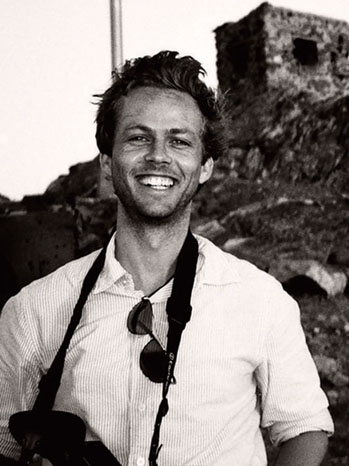|
|
||
|
Pro Tools
FILMFESTIVALS | 24/7 world wide coverageWelcome ! Enjoy the best of both worlds: Film & Festival News, exploring the best of the film festivals community. Launched in 1995, relentlessly connecting films to festivals, documenting and promoting festivals worldwide. Working on an upgrade soon. For collaboration, editorial contributions, or publicity, please send us an email here. User login |
New York - Tribeca 2012 DocumentariesThe Tribeca film festival has become the most important market oriented film festival in the United States and long excelled with strong documentary programs. Characterized by broad thematic orientations and concerns with global issues these documentaries have frequently received kudos as part of the best Tribeca sections. This year there were 33 feature length and 15 short documentaries with most originating in the United States. Productions focusing on socio-political issues constitute the single largest group. Traditional Tribeca concerns with music, sports, and the arts found their place as well. Though these other categories were attractive, they seemed less compelling than the issue oriented documentaries.
BOOKER’s PLACE
DOWN EAST
SIDE BY SIDE
THE FLAT
Evidently, there were other productions in the documentary program which should be singled out. Beth Murphy focuses in THE LIST on the dreadful fate of Iraqi collaborators assisting the US estimated at more than 120.000 individuals. They will have no protection once US troops have pulled out and were already singled out for certain death by radical militias. Less than 10% have passed thus far immigration hurdles frequently without being able to bring their families, a scenario that will have a sequel in Afghanistan.
PORTRAIT OF WALLY directed by Andrew Shea tracks the attempt to reclaim a painting by Ego Schiele which had been stolen by the Nazis from the Museum of Modern Art. Shea offers an insightful portrait of a small closed circle of high ranking US museum and gallery officials’ and donors, a self enclosed art elite, refusing to let go of art work acquired under dubious circumstances. WAGNER’S DREAM is an elaborately well produced production by Susan Froemke and Bob Eisenhardt. It reviews the artistic process of renowned stage director Robert Lepage’s creation of a new Wagner Ring cycle for the Metropolitan Opera in New York. Among his principal innovations are the effective applications of audio visual technologies, but more importantly the use of a 90.000 pound machine that will meet all scenic requirements for the cycle. The documentary captures the interaction of singers, staff, executives and technicians with The Machine which turns out to be the star of the show. Thus Wagner’s Dream becomes Wagner’s machine. As in past Tribeca editions, screening the documentaries was an enlightening experience. If exposure becomes a learning exercise and new grounds for reflection are broken, the curators have done a superb job and hopefully will do so again in 2013.
Claus Mueller 31.05.2012 | Tribeca Film Festival's blog Cat. : Afghanistan Aftermath of the September 11 attacks America American film directors Andrew Shea Arnold Goldfinger Ashley Sabin bank Berlin Beth Murphy Bob Eisenhardt Business Business Christopher Kenneallty Claus Mueller Contact Details David Redmon Director Documentary film Dura Eichmann Entertainment Entertainment entrepreneur Family Relation Film film maker filmexchange@gmail.com Frank De Felitta George Lukas Gerda Tuchler Germany Goran Hugo Olsson Greenwood Israel James Cameron Kurt Nazi Maine Metropolitan Opera Mississippi Mississippi: A Self Portrait Museum of Modern Art NBC New York Nisha Pahuja officer Oscar Person Career Person Email Address Person Relation Private Raymond De Felitta Raymond De Felitta Raymond Felitta Robert Lepage Steven Soderbergh Susan Froemke Technology Technology the Tribeca Film Festival Theresienstadt Trial TriBeCa Tribeca Film Festival United States US museum Visual arts waiter FILM
|
LinksThe Bulletin Board > The Bulletin Board Blog Following News Interview with IFTA Chairman (AFM)
Interview with Cannes Marche du Film Director
Filmfestivals.com dailies live coverage from > Live from India
Useful links for the indies: > Big files transfer
+ SUBSCRIBE to the weekly Newsletter Deals+ Special offers and discounts from filmfestivals.com Selected fun offers
> Bonus Casino
User imagesAbout Tribeca Film Festival Online Dailies Coverage of the Tribeca Film Festival, April 17-28, 2013
The Tribeca Film Festival brings together local, national, and international talent to provide the New York City, downtown community with five days of screenings, educational workshops, and various special events.
View my profile Send me a message My festivalThe EditorUser links |




























